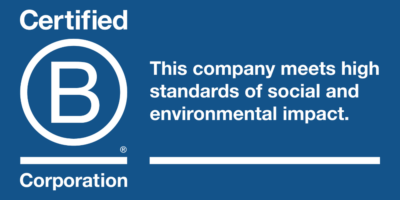Coined in 2005 in a landmark study entitled “Who Cares Wins,” which made the case that embedding environmental, social, and governance factors in capital markets makes good business sense and leads to better outcomes for society, ‘ESG’ is getting a lot of attention. Individuals, particularly young ones, are liking what they hear. Companies are paying more attention. Investors are reaping the reward. So, what is ESG?
A Better Way
E, S, and G refer to the Environmental, Social, and Governance standards used to measure and compare the sustainable practices social responsibility of corporations. Environmental standards, as the name suggests, include the effects of a company’s sustainability policies and practices – water use, energy consumption, noxious gas emissions, waste creation and disposal, disruption to biodiversity. Social standards include a company’s diversity efforts, equitable treatment of employees, workplace and product safety, giving back to the community. Governance standards include Board of Directors independence, executive pay tied to company performance, policies governing supplier practices. Taken together, ESG factors measure the social responsibility of a company and are being used as an input alongside traditional financial factors to determine which companies will provide the greatest probability of generating not only positive real-world outcomes, but also superior investment returns.
Background
Socially Responsible Investing (SRI), may have begun 200 years ago, when the Methodists agreed not to profit at the expense of their neighbors, choosing to avoid investing with those who earned their money through alcohol, tobacco, weapons, or gambling. Some suggest it began earlier with Islamic finance, whose most basic principle is that trade must be based on mutual agreement and benefit, and that risk and profit are to be shared. During the decades of the 1960s and 1970s, Americans’ interest in improving social equity and eliminating societal evils (weapons of war, environmental disaster) led to the creation of the first socially responsible mutual funds in the 1980s. The growth in these assets under management and popularity of the new investing approach warranted an index to measure performance, which saw the creation of the Domini Social Index in 2003. In 2004, United Nations Secretary-General Kofi Annan proposed a global Responsible Investment Initiative to define best practice responsible investment by institutional investors, and in 2006 the UN PRI was officially launched.
Where Are We Today?
Today, SRI assets under management globally are estimated to be $20 trillion ($12 trillion in US), about one-quarter of total worldwide assets under management, and growth has outpaced that for traditional investments.[1] In addition, while SRI originally focused on excluding companies doing harm, today SRI incorporates positive screening for ESG metrics that reveal companies doing good.
Collective Benefits
While the benefits to the planet and the people who inhabit it may seem obvious, shareholders also benefit when the companies in which they invest have superior environmental, social, and governance practices. ESG factors can be used to identify better-managed companies or to flag companies that will face headwinds or tailwinds driven by rapidly evolving regulatory, environmental, demographic or technological trends. A focus on environmental responsibility or employee equity, for example, can lessen the risk that a company might face an environmental disaster (British Petroleum’s Deepwater Horizon oil spill) or a financial and reputational disaster (Les Moonves’s misconduct while at CBS). In addition to eliminating potential risk, a focus on ESG can also result in a more engaged and productive workforce, growing end markets leveraged to new products and services catering to customers who value environmental and social benefits, and ultimately, superior shareholder returns. The KLD Socially Responsible Index has outperformed its traditional S&P500 peer since inception, confirming that ESG leads to superior financial returns on top of the real-world benefits.[2]
ESG at Riverwater
Riverwater Partners employs a Three-Pillar Approach to ESG that includes Research, Engagement, and Collaboration. We seek companies that are best-in-class with regard to their ESG efforts, or that are willing to engage to improve their ESG efforts, and we collaborate with thought leaders to inform and improve our practice. We believe this approach affords the greatest opportunity to reap the benefits of ESG in practice today. It is our goal to ensure your assets are invested for the long-term and given the opportunity to align with businesses that enhance our world for the next generation.
Disclosures:
The content is developed from sources believed to be providing accurate information. The information in this material is not intended as tax or legal advice. Please consult legal or tax professionals for specific information regarding your individual situation. Some of this material was developed and produced by Advisor to provide information on a topic that may be of interest. The opinions expressed, and material provided, are for general information, and should not be considered a solicitation for the purchase or sale of any security.
Please remember that different types of investments involve varying degrees of risk, and there can be no assurance that the future performance of any specific investment or investment strategy (including those undertaken or recommended by Advisor), will be profitable or equal any historical performance level(s). Past performance may not be indicative of future result
[1] Kell, George. “The Remarkable Rise of ESG.” 11 Jul. 2018. https://www.forbes.com/sites/georgkell/2018/07/11/the-remarkable-rise-of-esg/#53f08f971695
[2] MSCI & YCharts. Growth of $10,000. Period 5/31/1990-12/31/2017.



